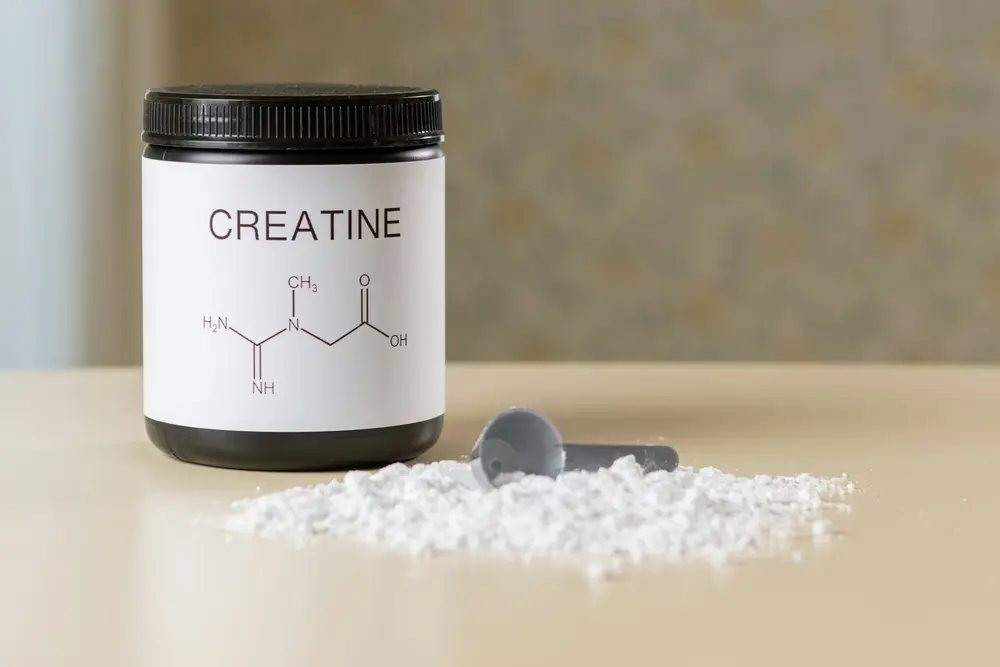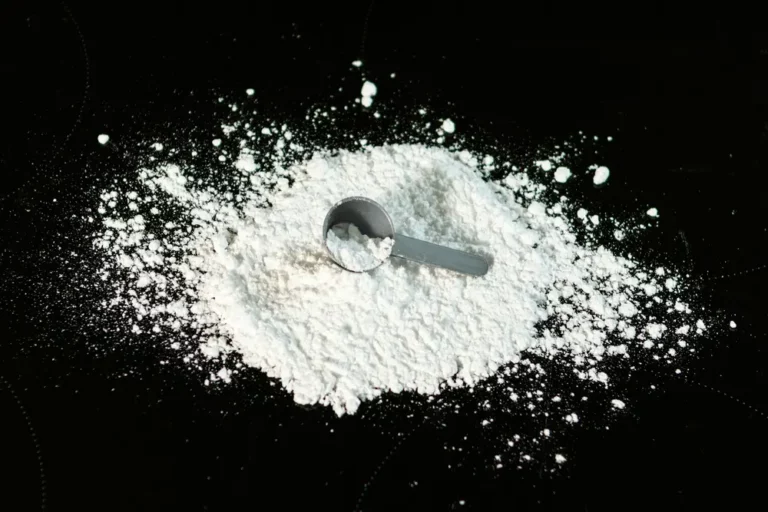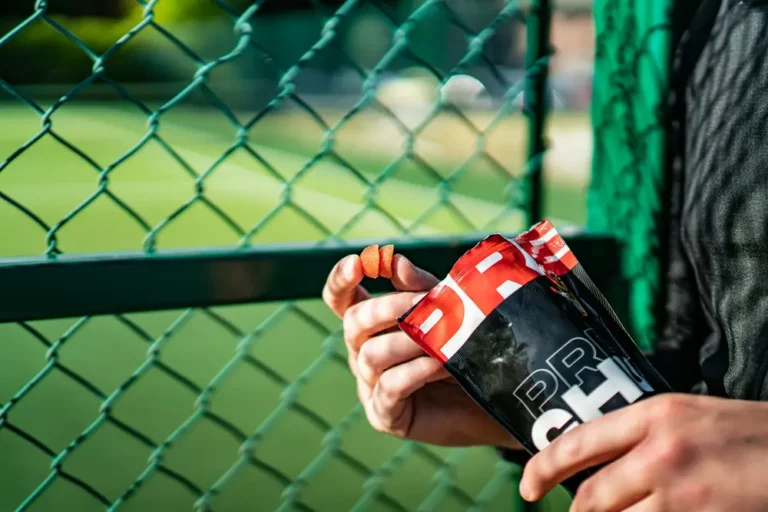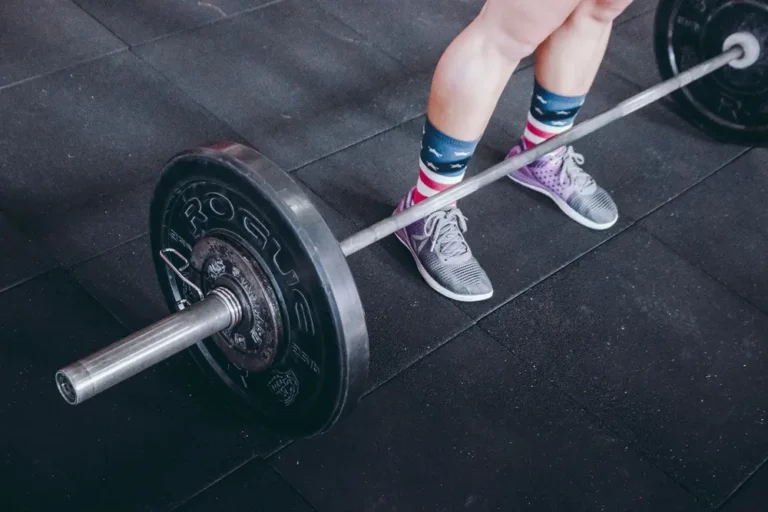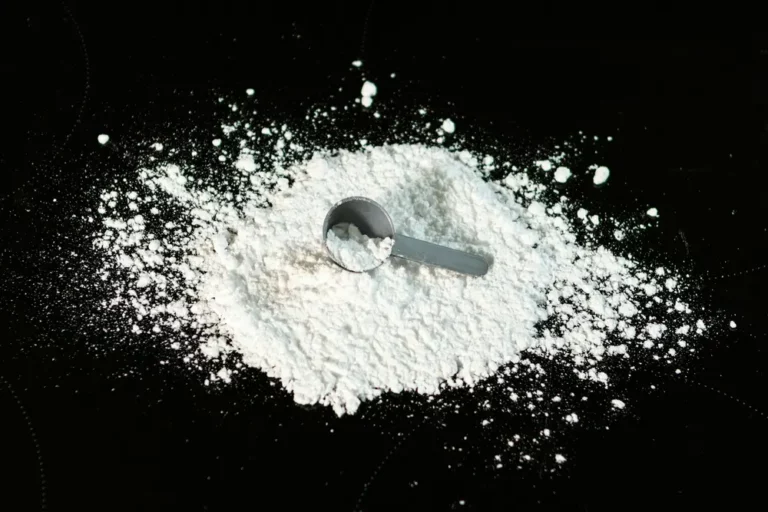Does Creatine Cause Facial Bloat? Expert Advice on Safe Use
I’ve heard the rumor too – that creatine can turn your chiseled jawline into something a bit more… rounded. It’s a common worry among gym-goers and athletes alike, sparking debates and concerns about its effects on facial appearance. But before we jump to conclusions, let’s dive into what science has to say.
The truth is, creatine is a favorite in the fitness world for a good reason. It boosts performance and muscle growth, but does it also gift us with an unwanted puffy face? I decided to sift through the myths and facts to give you the lowdown on creatine and its impact on your face.
Understanding Creatine and Water Retention
In my journey to demystify the effects of creatine, I’ve learned that it’s more than just a popular dietary supplement for athletes and gym-goers. Essentially, creatine is an amino acid located predominantly in muscle cells. It’s vital for producing energy during high-intensity, short-duration exercises such as sprinting or heavy lifting. When I take a creatine supplement, I’m essentially increasing my muscles’ creatine stores. This boost can significantly enhance performance, allowing for increased work in a single training session, which, over time, can contribute to gains in muscle strength and size.
The body naturally produces some creatine, and it’s also found in protein-rich foods like meat and fish. However, supplementation provides a direct and concentrated dose that can more noticeably impact muscle energy storage and production. I’ve observed that by enabling me to work harder, creatine supplementation indirectly supports muscle growth and overall athletic performance.
The Mechanism Behind Creatine-Induced Water Retention
Delving into the science, the water retention commonly associated with creatine occurs due to its osmotic effect. When creatine is stored in the muscle, it binds with phosphate to form creatine phosphate. This process helps regenerate ATP, the primary energy molecule. However, creatine’s osmotic properties mean it attracts water into the muscle cell. I find it fascinating that this effect can lead to a quick increase in muscle size, which is often the initial weight gain observed when someone starts supplementing with creatine.
The increase in intracellular water content can indeed make muscles appear fuller and more voluminous, which is a positive for many athletes seeking that “pumped” look. However, this is where confusion often arises regarding facial bloating. The intracellular water retention primarily affects muscle cells, and while it’s true that more water in the body could potentially distribute somewhat uniformly, including the face, the direct link between creatine and specific facial water retention isn’t robustly supported by science.
Understanding that the initial weight gain from creatine is likely water rather than fat is crucial. This knowledge helps me appreciate the changes my body undergoes and reassures me that I’m not suddenly putting on fat due to my creatine supplementation. In my case and many others, the benefits of improved performance and muscle recovery outweigh the temporary adjustment in water balance.
Correlation Between Creatine and Facial Puffiness
When diving into the effects of creatine, a hot topic that pops up is its impact on facial appearance, specifically regarding facial puffiness or what some might call “getting a fat face.” Let’s break down the science and see what’s really happening. Creatine, as we know, enhances water retention in muscles, contributing to that swole look many of us are after. However, the big question is whether this water retention spills over, so to speak, into facial tissues.
Research on this specific topic is surprisingly sparse. Most studies that touch on creatine and water retention focus on intramuscular water retention which is a whole different ball game compared to subcutaneous (under the skin) water retention that would lead to facial puffiness. That said, there’s some anecdotal evidence floating around in forums and amongst gym-goers about creatine causing a bloated look, but scientifically speaking, a direct correlation between creatine supplementation and increased facial fat or puffiness isn’t strongly supported.
What’s interesting, though, is creatine’s osmotic effect, which pulls water into the muscle cells. This mechanism is mainly localized to the muscles being exercised and supplemented, with less evidence pointing towards a systemic effect that would affect facial features. Still, the idea can’t be completely dismissed, as individual experiences seem to vary greatly.
Individual Variability in Response to Creatine
And that brings us to a crucial point about creatine or any supplement for that matter—individual variability. We all have that friend who claims they “bulk up” just by looking at a dumbbell, while others can lift for weeks without noticeable size gains. This variability applies to how our bodies react to creatine as well.
Some people might experience a noticeable change in facial fullness due to a combination of factors such as diet, how much water they’re drinking, and even their genetic predisposition to retain water in different body areas. It’s essential to understand that while creatine increases water retention in muscles, individual responses can lead to varied effects, including the potential for minor changes in facial appearance.
But it’s important to highlight that these effects are usually temporary and reversible once the creatine supplementation is paused or ceased. Adequate hydration and mindful monitoring of dosage can help mitigate undesirable side effects, including unwelcomed changes to facial appearance.
Addressing Misconceptions About Creatine and Facial Fat
In exploring the effects of creatine, it’s essential to debunk some myths, particularly around the notion that it might make your face appear fatter. Let’s dive into the intricacies and set the record straight.
Distinguishing Between Water Retention and Fat Gain
First off, I’d like to clarify a common mix-up between water retention and actual fat gain. When you start taking creatine, you might indeed notice a slight puffiness or fullness in the facial area. But here’s the deal – this isn’t due to fat piling up. Creatine pulls more water into your muscle cells, enhancing your muscles’ look and size. This process can lead to a bit of water retention overall, which might momentarily change how your face looks. But, and I can’t stress this enough, it’s not about fat. My own experience mirrored this; a fuller look certainly, but it quickly became evident that it wasn’t fat making the difference.
Long-Term Effects of Creatine on Facial Features
Moving on to what happens in the long run, it’s vital to understand that any slight changes in facial appearance due to water retention are, by all accounts, temporary. The pivotal fact to remember is that water retention varies significantly from one person to another. For some, it might be more noticeable, and for others, less so. Throughout my years of supplementation and engaging with others doing the same, the consensus is clear: any puffiness subsides as your body adapts to the creatine intake.
Besides, the focus should really be on the muscle gains, and performance boosts creatine is proven to facilitate. Over time, as I and many others have found, the benefits of strength and endurance far overshadow any temporary shifts in water balance. In essence, taking creatine might initially alter your facial appearance slightly due to water retention, but those effects don’t stick around, nor do they translate to fat gain. Instead, the lasting impact of creatine is on muscle development and physical performance – areas where it truly shines.
Managing Creatine-Related Water Retention
When it comes to ensuring that my fitness journey is both effective and comfortable, I’ve learned that addressing creatine-related water retention is key. Some folks worry that this extra water might make their face look puffier than usual. But, with a few strategies up my sleeve, I’ve managed to keep any unwanted swelling at bay.
Appropriate Dosage and Supplementation Strategies
First off, getting the dosage right has been crucial. Creatine monohydrate, the form I use, is well-studied, and I’ve stuck to the recommended dosing guidelines to avoid overdoing it. The typical loading phase involves taking 20 grams divided into four 5-gram servings throughout the day for about 5-7 days. After that, a maintenance dose of 3-5 grams daily does the trick.
But it’s not just about how much I take; it’s also about when. I’ve found that taking my creatine with a meal or snack that includes carbs and protein helps improve its uptake into my muscles, partly due to the spike in insulin these macronutrients cause. This strategy not only aids in muscle recovery and growth but also seems to help distribute the water more evenly, rather than it all going straight to my face.
Dietary and Lifestyle Adjustments to Mitigate Puffiness
Aside from the creatine itself, I’ve made a few tweaks to my diet and lifestyle to help manage any potential puffiness.
- Stay Hydrated: It might sound counterintuitive, but drinking plenty of water actually helps my body release any excess. I aim for at least 8-10 glasses a day.
- Balance Electrolytes: I keep an eye on my intake of electrolytes like sodium and potassium. Too much salt, in particular, can worsen water retention, so I try to keep it in check.
- Increase Antioxidant-Rich Foods: Foods high in antioxidants can help reduce inflammation, which indirectly aids in reducing water retention. Berries, leafy greens, and nuts are now staples in my diet.
- Regular Exercise: Keeping active encourages blood circulation and helps flush out excess water through sweat.
By incorporating these strategies, I’ve managed to enjoy the benefits of creatine without the worry of looking like I’ve suddenly gained weight in my face. It’s all about finding that balance and understanding how my body reacts to supplements and dietary changes.
Alternative Creatine Forms and Their Effects
When embarking on a fitness journey and incorporating supplements like creatine into my regimen, I quickly realized that not all creatine is created equal. Diving deeper into the world of supplements, I found an array of creatine forms, each boasting its own set of benefits and potential drawbacks. So, let’s break down the differences and see how each type might affect something as specific as facial bloating or overall water retention.
Comparing Different Types of Creatine Supplements
First off, the most commonly known form is Creatine Monohydrate. It’s lauded for its effectiveness in improving strength, power, and muscle mass. One perk I’ve noticed is its affordability, making it a go-to for many fitness enthusiasts, myself included.
Then there’s Creatine Ethyl Ester, promoted for its superior absorption rate. The theory suggests it could potentially reduce the water retention effect, a significant concern for those worried about facial puffiness. However, research and personal experience have pushed me to question whether its efficacy matches that of monohydrate.
Buffered Creatine is another variant designed to lessen the conversion of creatine into creatinine, a waste product, thereby enhancing its potency. Yet, despite the claims, I’ve found its effectiveness in real-world application to be comparable to monohydrate, without significant advantages concerning water retention.
Creatine Hydrochloride (HCl) is lauded for its solubility and higher absorption rate, suggesting lesser amounts are needed for the same benefits. This characteristic might hint at reduced chances of water retention, yet definitive studies and my exploration have yet to solidify this claim.
Potential Differences in Water Retention Among Creatine Variants
The dreaded water weight gain, particularly around the face, is a primary concern linked with creatine use. Through my journey and research, I’ve aimed to uncover if any particular form of creatine minimizes this side effect.
Creatine Monohydrate, while effective, is often associated with increased water retention, potentially leading to a more ‘bloated’ appearance. It’s important to note, though, that this effect is largely temporary and can subside as the body adjusts.
Contrarily, Creatine Ethyl Ester and HCl variants are marketed as causing less bloating and water retention, mainly due to their purported better absorption rates. In my experience, however, while slight differences in bloating might occur, they aren’t profound enough to declare one far superior to monohydrate in this aspect.
The hypothesis with Buffered Creatine hinges on its reduced conversion to creatinine, theoretically reducing unnecessary water retention. Yet, my findings align with the broader consensus that while minor differences can exist between creatine forms, individual responses vary greatly.
Practical Tips for Creatine Users Concerned About Aesthetics
When it comes to using creatine, one of the common apprehensions revolves around its potential to cause facial bloating or an increase in facial fat. While we’ve uncovered that the weight gain associated with creatine is often due to increased water retention rather than fat, it’s understandable why some might be concerned about their physical appearance. I believe many of you ask should i take creatine if i’m trying to lose weight, and although it may lead to some unwanted bloating, there are ways to avoid it.
Let’s dive into some actionable advice for those who wish to reap the benefits of creatine without the unwanted aesthetic side effects.
Monitoring and Adjusting Creatine Intake Based on Physical Responses
I’ve learned through my journey that our bodies react uniquely to different supplements, including creatine. An essential step is to monitor how your body responds after you start taking creatine. Keep an eye on changes not just in your face but your entire body. Weight gain may be noticeable, but remember, it’s crucial to distinguish between fat gain and water retention.
I recommend keeping a journal to track your creatine intake along with any physical changes or sensations you experience. This practice can help you identify patterns and decide if adjustments are needed. For instance, if you notice an increase in facial bloating, it could be beneficial to reduce your dosage slightly and see how your body reacts over the following weeks.
Hydration is also key. Drinking ample water can actually help minimize water retention – it sounds counterintuitive, but it works. Ensuring you’re well-hydrated aids in maintaining a balance in water levels, potentially alleviating that bloated look.
When to Consider Reducing Dosage or Switching Supplements
If after adjusting your creatine intake and ensuring proper hydration you still find the aesthetics bothersome, it might be time to consider other options. Creatine comes in various forms, and while the monohydrate version is the most researched and widely used, others might be more suitable for you. Creatine hydrochloride (HCl), for example, is known for its increased solubility which some believe might reduce the chance of water retention.
Reducing your overall dosage could also be beneficial. The standard recommendation is around 5 grams per day, but this isn’t a one-size-fits-all situation. Lowering the dose to half while monitoring the impacts on both performance and physical appearance might strike the right balance for you.
It’s important to remember that the goal is to find what works best for your body and your fitness goals. Sometimes, a bit of trial and error is necessary to pinpoint the perfect regimen. Prioritizing your health and well-being above all, and consulting with a healthcare professional before making significant changes to your supplement intake, is always wise.
Consultation and Guidance on Creatine Use
I can’t stress enough the importance of getting professional advice before you start taking any supplement, including creatine. Though it’s widely considered safe, creatine isn’t suitable for everyone. For instance, if you’ve got a pre-existing medical condition or if you’re already on medication, you’ll want to chat with a healthcare professional to make sure adding creatine to your regimen is a smart move. Also, if you’ve started supplementing and notice changes that concern you, like excessive facial bloating, it’s definitely time to reach out. They can help determine if what you’re experiencing is temporary, tied to the supplement, or perhaps indicative of something else that needs attention.
Utilizing Healthcare Resources for Personalized Supplement Planning
Tapping into healthcare resources for guidance on your creatine journey is a wise move. A professional, be it a doctor, nutritionist, or dietitian, can offer personalized advice that’s specifically tailored to your body’s needs, your fitness goals, and any health concerns you might have. They can help you figure out the ideal dosage, the best type of creatine for your objectives, and how to incorporate it into your diet and workout routine for optimal results. Remember, everybody responds differently to supplements, and what works for someone else might not work the same way for you. By consulting with an expert, you’re taking a step towards ensuring your health and wellness journey with creatine is not only effective but also safe.
Conclusion
So there you have it. The key takeaway is the importance of personalized advice when it comes to creatine and its effects on your body, including your face. It’s clear that everyone’s experience with supplements can vary greatly. That’s why it’s so crucial to chat with a healthcare professional who can guide you based on your unique health profile and goals. They’ll help you navigate any concerns like facial bloating and ensure your creatine journey is both safe and effective. Remember, the goal is to enhance your health and fitness routine, not complicate it. So don’t shy away from seeking out that expert advice. It could make all the difference in how you experience creatine.
FAQ – Frequently Asked Questions
Does creatine make you look chubby?
Creatine can lead to temporary weight gain due to water retention in your muscle cells, which might make you look a bit puffier or chubbier, especially in your arms, legs, and stomach. It’s part of the normal process and not indicative of fat gain.
What does creatine do to your face?
Apart from its muscle-building benefits, creatine has skin benefits such as aiding in the treatment of hyperpigmentation, dark spots, and melasma by fostering quicker cell turnover and repair of damaged skin cells.
Do you look leaner without creatine?
Discontinuing creatine won’t necessarily make you look leaner. The supplement primarily increases muscle mass without adding fat. The water weight gained in muscle cells may give a bulkier appearance but doesn’t equate to body fat increase.

